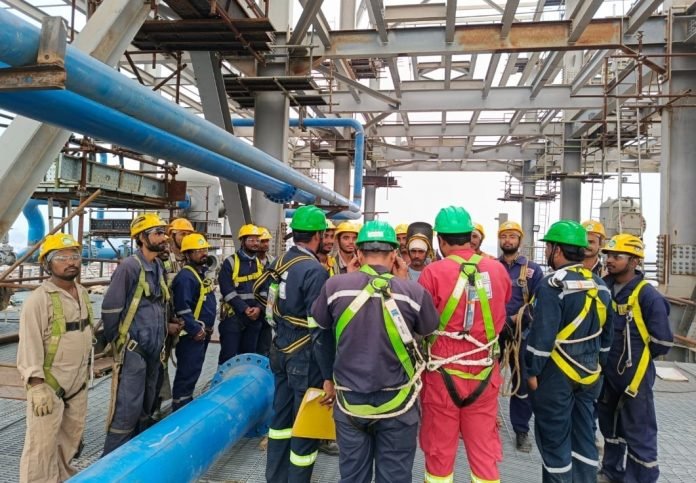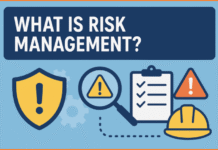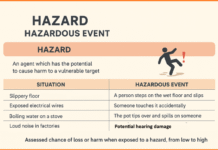In the field of occupational safety, the history of safety harness/belt for work at height is a fascinating journey marked by innovation, lessons learned from incidents, and a commitment to enhancing workplace safety. The development of safety harness/belt has been instrumental in preventing accidents and ensuring the safety of workers engaged in height work.
Contents
Early Years:
The concept of safety harness dates back to the early 20th century when industrialization led to an increased demand for workers to operate at heights, such as construction sites and tall structures. However, initial safety measures were rudimentary, often relying on makeshift solutions like ropes and basic belts that offered minimal protection.
World War II:
The need for effective safety measures became even more apparent during World War II. As soldiers engaged in airborne operations faced the peril of parachuting, the military developed more advanced harness to enhance their safety during descents. These innovations laid the foundation for the modern safety harness, with features like adjustable straps and secure buckles.
Post-War Developments:
After the war, the knowledge gained from military applications began to influence civilian safety practices. Industries like construction, telecommunications, and energy production embraced the idea of using safety harness to protect workers at heights. Early harness designs were often uncomfortable and lacked the ergonomic considerations that are standard today.
Regulatory Influence:
The 1970s and 1980s marked a turning point for safety harness with the introduction of stringent occupational safety regulations. Governments and industry organizations recognized the importance of protecting workers and implemented standards that mandated the use of safety harness in various settings. These regulations spurred innovations in harness design, pushing manufacturers to create more comfortable and effective solutions.
Technological Advancements:
As technology advanced, so did safety harness designs. Materials like nylon and polyester replaced traditional materials, making harness more durable and lightweight. Buckles and connectors evolved, incorporating quick-release features and ensuring secure fastening. Additionally, ergonomic considerations became paramount, leading to the development of harness that allowed for freedom of movement while maintaining optimal safety.
Specialized Applications:
The evolution of safety harness didn’t stop at general-purpose designs. Industries with unique challenges, such as the wind energy sector and confined-space work, spurred the development of specialized harness tailored to their specific needs. These innovations showcased the adaptability of safety harness technology across various work environments.
Future Trends:
Looking forward, the future of safety harness is likely to involve further advancements in materials, smart technologies, and increased integration with other safety equipment. Sensors and communication devices may become standard features, providing real-time data on the wearer’s condition and enhancing emergency response capabilities.
The history of safety harness/belt for work at height is a testament to the human commitment to improving workplace safety. From humble beginnings to sophisticated, technologically advanced designs, safety harness have come a long way in safeguarding lives and preventing accidents. As industries continue to evolve, so too will safety harness, ensuring that workers can carry out their tasks at heights with confidence and security.
Frequently Asked Questions for History of Safety Harness/Belt
Q: When were the first safety harnesses introduced for work at height?
A: The concept of safety harnesses for work at height began to take shape in the early 20th century, with rudimentary solutions such as ropes and basic belts. However, more advanced harnesses were developed during World War II for military airborne operations.
Q: How did military applications influence the development of safety harnesses?
A: During World War II, the military developed advanced harnesses to enhance the safety of soldiers during airborne operations. The knowledge gained from these applications played a significant role in shaping the design and functionality of modern safety harnesses.
Q: What role did regulatory standards play in the evolution of safety harnesses?
A: The 1970s and 1980s saw the introduction of stringent occupational safety regulations, mandating the use of safety harnesses in various industries. These standards played a crucial role in driving innovations in harness design, making them more comfortable, effective, and compliant with safety regulations.
Q: How have materials and technology contributed to the evolution of safety harnesses?
A: Advances in materials, such as the use of nylon and polyester, have made safety harnesses more durable and lightweight. Technological advancements have led to the incorporation of features like quick-release buckles and ergonomic designs, enhancing both comfort and safety.
Q: Are safety harnesses only used in general construction, or do they have specialized applications?
A: While safety harnesses are commonly used in general construction, they have found applications in various industries with unique challenges. Specialized harnesses have been developed for sectors like wind energy, confined-space work, and other specific environments, showcasing the adaptability of safety harness technology.
Q: What can we expect in the future of safety harnesses?
A: Future trends in safety harnesses may involve further advancements in materials, the integration of smart technologies, and the incorporation of sensors for real-time monitoring. The goal is to enhance user safety, comfort, and overall effectiveness in preventing accidents at heights.
Q: How do safety harnesses contribute to overall workplace safety?
A: Safety harnesses are a crucial component of fall protection systems, preventing workers from falling when working at heights. By distributing forces across the body and providing a secure attachment point, harnesses play a vital role in minimizing the risk of injuries and fatalities in various industries.





